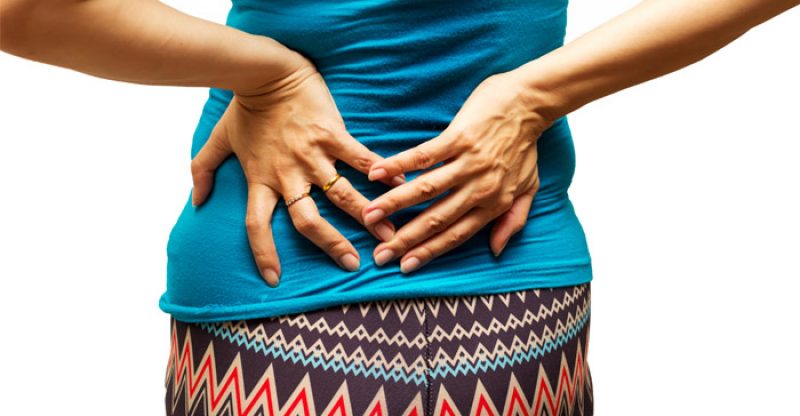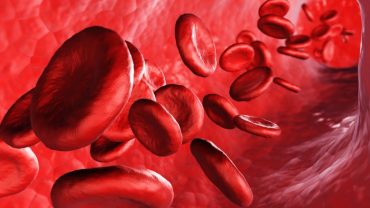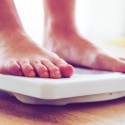The Ultimate Physical Therapy Guide for Back Pain
One of the most common physical complaints, especially among women, is low back pain.
The condition affects millions of people in the world, contributing to substantial losses in work productivity as well as a reduction in people’s overall quality of life.
There are a variety of ways upon which back pain can be managed.
Equally important is beefing up your knowledge on what back pain is including its symptoms, any associated health conditions, and how it is typically diagnosed.
This will help pave the way to understanding the role of physical therapy in the management of back pain.
What is Back Pain?
Back pain is not a disease in itself, but rather a symptom of a certain condition that is located in the spine or vertebral column.
To understand what it is, it is crucial to look at the normal anatomy of the spine or the backbone.
One can consider the spine as the focal point of every other organ and tissue that make up the musculoskeletal system.
It is made up of uniquely-shaped bones sitting one on top of each other.
These bones are then connected to one another by a system of connective tissues.
Muscles attach to these bones to help provide movement.
Inside the spine is space upon which the spinal cord emanating from the brain passes through.
Each segment of the spine, called a vertebra, comes with special openings for nerves to enter and exit, connecting the spinal cord to the rest of the body.
What Causes Back Pain?
Back pain can occur anywhere along the entire length of the vertebral column.
It can be brought for a variety of reasons.
This is made even more pronounced than other types of pain because of its close proximity to the spinal cord.
A dysfunction or a problem in any of the bones of the spine and its associated structures can instantly deliver pain messages or signals to the brain via the spinal cord.
One does not need an extensive injury to produce back pain.
Even simple movements can bring about an intensely sharp pain that people often describes as ‘shooting’ through their back.
For instance, picking up an object from the floor can bring about pain in the back especially if one did not observe proper body mechanics.
Overexertion and lifting of heavy objects without compensating for the increased pull of gravity can all lead to back pain.
Even the simple joys of motherhood – being pregnant – can bring about intense pain in the lower back.
Poor posture, obesity, and even psychological stress can also complicate the pain already experienced at the back.
Here are some of the more common causes of back pain:
- Spine-related Problems
Any condition that affects the spine will most likely cause back pain.
This is often described by a dysfunction in the various structures that make up the backbone including the intervertebral discs, joints, nerves, and muscles.
For instance, slipped or herniated discs can typically produce low back pain or even pain in the hip because of pressure on the nerves caused by the soft tissues in the discs coming out of their normal position.
Bulging discs, on the other hand, can produce pain only it is large enough to push on a particular nerve root.
Other problems of the spine that can cause back pain include degenerative disc diseases, spinal stenosis, spondylolisthesis, cervical radiculopathy, and inflammation of the sacroiliac joint.
- Lifestyle Triggers
Women of both productive and reproductive age are more prone to the occurrence of back pain.
Lifestyle triggers are those that we do on a daily basis such as slouching on your office chair, lifting heavy objects when you’re not supposed to, and even wearing high heels.
Smoking, obesity or being overweight, and lack of physical exercise can also contribute to the occurrence of back pain.
- Injuries and Accidents
Accidents do happen anytime.
Even with utmost vigilance, when accidents strike, there bounds to be some form of tissue injury.
Fractures of the spine can be caused by a blow to the back or perhaps a nasty fall.
Even individuals with osteoporosis, a condition that is more common among menopausal women, can make the bones of the vertebral column more prone to fractures.
Sprains and strains can also produce back pain.
- Emotional Factors
Stress is one of the most studied physiologic phenomena that have an effect in almost every other organ of the body.
When it comes to back pain, stress causes muscle tension.
Anxiety and depression can then make this sensation of pain feel a lot worse.
- Pregnancy
The rapid weight gain that accompanies pregnancy puts additional pressure on the spine since this is what typically supports the rest of the body.
Also, the growing fetus inside the pregnant woman’s womb literally pulls the abdominal wall downwards and outwards, causing a more pronounced lordosis.
- Other Causes
Other possible causes of back pain can include endometriosis, fibromyalgia, kidney stones, urinary tract infections, and osteomyelitis.
Also included are tumors, scoliosis, arthritis, osteoarthritis, and ankylosing spondylitis.
What are the Symptoms of Back Pain?
Contrary to popular belief there are different kinds of pain that can emanate from the back.
While back pain is a symptom in itself, this can still be further described as any of the following:
- Persistent feeling of stiffness or aches that can occur anywhere along the entire length of the backbone from the base of one’s neck right down to the coccyx or the tailbone.
- The chronic ache that is present in the middle or even lower back which usually occurs after prolonged sitting or standing.
- Sharp pain that can be described as localized to the upper back, neck, or even lower back which typically occurs after a strenuous activity or even after lifting heavy items or objects.
- Inability to stand or sit up straight without experiencing muscle spasms or pain especially in the lower back.
- Pain that radiates to the buttocks, the back of the thigh, the calf, and the toes.
How is Back Pain Diagnosed?
The back pain is not really that difficult.
However, your physical therapist will have to perform a very thorough and comprehensive assessment of your condition to help determine the most plausible cause or even the exact reason for the pain in the backbone.
This is crucial since the whole idea about physical therapy is to use the results of an exhaustive clinical assessment to arrive at an accurate diagnosis and form the basis for the planning of a comprehensive physical therapy management.
A physical therapist will perform the following activities to help in the formulation of an accurate diagnosis:
- A comprehensive assessment of your health history including any history of past and current medical conditions, surgical procedures are undertaken, past and current medications and supplements taken, and family health and medical history, among others.
- An interview about the symptoms that you observe related to your back pain.
- A focused physical examination of your backbone which can include the inspection of visible anatomical deformities and the palpation of possible problems. In some cases, the area surrounding the backbone may also be percussed and auscultated to identify any other potential problem that may contribute to the development of back pain.
- An examination of your functional mobility often in relation to your activities of daily living. This can include an evaluation of the range of motion of the back whether there is the limitation in the optimal movement of joints or none. Also included are behaviors related to mobility which may be considered as risk factors for delayed recovery.
- An assessment of how the body is used in relation to household activities, sports, work-related activities, and leisure.
- Other tests that can help identify the presence of medical conditions that may directly or indirectly impact the development of back pain or the treatment modalities for back pain.
- Coordinate with diagnostic imaging technicians for the conduct of diagnostic imaging tests such as x-rays, magnetic resonance imaging, and computed tomography scan. These may not aid in recovery but they can provide a great picture of what is occurring in the spine.
- Physical therapists are members of a healthcare team. If they suspect that the back pain is caused by a disease process that requires an entirely different intervention, they will refer the patient to other members of the healthcare team who are more competent in the management of such conditions. In most cases, however, a physical therapist will be called upon to improve the mobility aspects of back pain while medical doctors will be providing the definitive treatment for whatever is causing the back pain.
How Can Physical Therapy Help?
The main responsibility of physical therapists in the management of back pain is always two-pronged.
First, they will help improve or at least restore mobility so that you can go about your business on a daily basis.
The second goal of physical therapy is in the alleviation of pain itself without resorting to medications or even surgery.
Physical therapists can employ a number of modalities to help achieve these two goals: improved mobility and reduced pain.
These physical therapy modalities can be divided into two groups: active and passive.
We will explore each one in the following.
Passive Physical Therapy Modalities
As the term suggests, passive physical therapy modalities do not require any active participation from the patient.
It is up to the physical therapist to apply these modalities on the patient or he may teach the patient on the proper execution of such modalities.
The following are examples of passive physical therapy modalities that can be used in the management of back pain:
Cold Therapy
In almost any kind of injury, cold therapy is often indicated especially in the first 24 hours after injury.
This produces vasoconstriction which limits the amount of blood that goes to the injured site.
The lower temperature also favors the reduction of cellular activity, limiting the extent of the tissue injury to the site.
This is especially helpful in back pain that is accompanied by swelling as this effectively reduces the degree of inflammation.
Physical therapists never apply ice packs directly on the skin as doing so can significantly damage the skin.
The length of application is also shorter than that of heat applications.
On the average 10 to 15 minutes of cold application is all that is needed to effect the desired change.
If it is necessary to go beyond the 15 minutes, it should not exceed 20 minutes.
Heat Therapy
Heat therapy is one of the nonpharmacologic methods of managing pain.(8)
The application of warm compresses, hot water bottles, heating pads, or even steamed towels over a painful area has been shown to relax and soothe muscles while at the same time promote tissue healing.
This is accomplished by improving the flow of blood to the site of tissue injury.
The increase in local temperature can help loosen tight muscles while allowing for the body’s reparative cells to start with tissue repair and regeneration.
Typically, heat therapy is applied to an intact skin, meaning there should be no open wounds.
Doing so will increase the risk of bleeding from the site because of the improved blood circulation.
Also, individuals with preexisting diseases such as diabetes, multiple sclerosis, dermatitis, deep vein thrombosis, and vascular diseases should not be applied with heat therapy.
Spinal Manipulation or Manual Therapy
Spinal manipulative therapy is a rather controversial management option for back pain for the simple fact that it is mostly administered by chiropractors who are, unfortunately, still not widely accepted in the medical community.
However, the role of spinal manipulation in low back pain cannot be discounted since more and more medical practitioners infrequently recommend its use.(1)
Spinal manipulation works by repositioning the facet joints and disc material in combination with the freeing of adhesions that may have formed around prolapsed discs.
It is also believed that, in the hands of a skilled physical therapist, spinal manipulation can inhibit the transmission of pain impulses by mechanically stimulating large nerve fibers in the backbone.
It can also reduce stiffness or muscle tension.
Transcutaneous Electrical Nerve Stimulation
Many individuals suffering from chronic low back pain have to be given powerful opioid analgesics to help control the pain.
Research shows that the application of Transcutaneous Electrical Nerve Stimulation may eliminate the need for opioid analgesic administration.
The use of TENS to relieve low back pain is one of the most sought-after modalities in physical therapy.(2)
TENS works by sending precisely measured electrical pulses to the various nerve strands on the surface of the skin.
This helps prevent low back nociceptive impulses from reaching the brain.
Additionally, the procedure has been shown to stimulate the brain to increase its production of natural painkillers known as endorphins.
This combination of pain transmission blockage and increased naturally-occurring endorphin production is what can help individuals with low back pain.
Dry Needling
One might consider trigger point dry needling as a more modern interpretation of the ancient art of acupuncture.
In Chinese traditional medicine, acupuncture is extensively used in the management of pain including low back pain.
However, since a great majority of western medicine does not consider acupuncture to be based on sound science, dry needling would offer a more ‘scientific’ explanation as to how the insertion of a thin filament needle can help provide a host of benefits to an aching back.
Dry needling has been shown to be effective in reducing pain in patients with low back pain.(3)
It augments the natural response of the central nervous system in the management of pain by releasing endorphins and corticosteroids.
The procedure also helps relax tense muscles which can greatly improve overall mobility.
Ultrasound
The use of ultrasound in the management of chronic back pain may raise some eyebrows since the procedure is largely considered as diagnostic in nature.
However, physical therapists also use therapeutic ultrasound in the management of chronic low back pain.(4)
It should be noted that ultrasound in itself does not reduce the intensity of pain; however, it can improve the overall functioning of the back.
This can be good news for those who would want to restore functionality in their backs.
Exercises for Back Pain
Exercise interventions are some of the key components of effective physical therapy.
It is a well-established fact that certain exercises can improve low back pain.(5)
Physical therapists can help individuals learn and perform these exercises so that they can actively participate in the management of their back problems.
It is for this reason that physical therapy exercises are also considered as active physical therapy modalities since the patient is actively involved in its performance.
Here are some physical therapy exercises that can aid in the management of back pain:
Stretching
When done correctly, stretching exercises can help improve and maintain the normal range of motion of the joints of the backbone while also providing relief for the muscles.
In many patients, disuse atrophy or the shrinking of the muscle cells because of lack of use secondary to lack of exercise and leading a sedentary lifestyle can lead to back pain.
Muscle spasms can also result because of nerve irritation of even incorrect posture.
Stretching exercises can help improve the symptoms of back pain while also improving overall mobility in this region.(6)
Dynamic Stabilization Exercises
These set of exercises aim to strengthen the associated muscles of the backbone while also supporting the spine through the different ranges of motion.
Dynamic stabilization exercises are used by physical therapists to improve the overall function of the back.(7)
These can include balancing machines, exercise balls, and other stabilizing exercises.
Core Strengthening Exercises
These physical therapy exercises aim to strengthen the muscles of the lower back as well as those found in the abdominal wall.
These can include sit-ups, leg raises, and the use of abdominal machines.
Some physical therapists may also teach individuals on how to perform “good mornings” which is a lot similar to bending over to touch one’s toes while standing and with weights firmly propped across one’s shoulders.
Hyperextending the spine can also be taught at physiotherapy clinics.
Other Physical Therapy Modalities
Passive and active physical modalities are not the only treatment that physical therapists can provide when it comes to managing back pain.
Other modalities can also be provided to help improve overall functioning while also helping reduce the intensity of the pain being experienced:
Lumbar Traction
This treatment modality aims to remove the pressure on the muscles and disc space of the lumbar vertebrae to allow for proper recuperation.
Pulling on these structures helps relax the muscles while removing the pressure on the intervertebral disc space.
Aquatic Physical Therapy
For individuals that complain of severe back pain, even performing an exercise can be painful.
As such, some physiotherapy clinics provide aquatic physical therapy to lessen the impact of gravity on the body.
The body is buoyed by water making it a lot easier to move and perform a variety of physical therapy exercises without considerable pain.
How to Prevent Back Pain
Part of the responsibility of physical therapists is to educate patients on various activities that can help prevent the re-occurrence of back pain while also improving overall mobility.
The following are just some of the ways you can prevent back pain.
- Regularly and actively participate in stretching and strengthening exercise to make the muscles of the back stronger and more flexible, allowing them to be more resilient with movement.
- Observe proper body mechanics in everything that you do. Your physical therapist can show you how these are done.
- Maintain the correct body posture by keeping your back straight at all times.
- When lifting objects, keep it close to your body. A better solution is to ask for help.
- Always use assistive devices when lifting, carrying, or moving heavy objects.
- Stay in shape by following a regular exercise program.
You don’t have to suffer needlessly because of back pain.
Physical therapists can help you find the correct treatment for your back pain without having to resort to side effects-laden medications or even expensive surgical procedures.
What’s more, you get hands-on, highly individualized care that is appropriate for your case.
FDA Compliance
The information on this website has not been evaluated by the Food & Drug Administration or any other medical body. We do not aim to diagnose, treat, cure or prevent any illness or disease. Information is shared for educational purposes only. You must consult your doctor before acting on any content on this website, especially if you are pregnant, nursing, taking medication, or have a medical condition.
HOW WOULD YOU RATE THIS ARTICLE?





